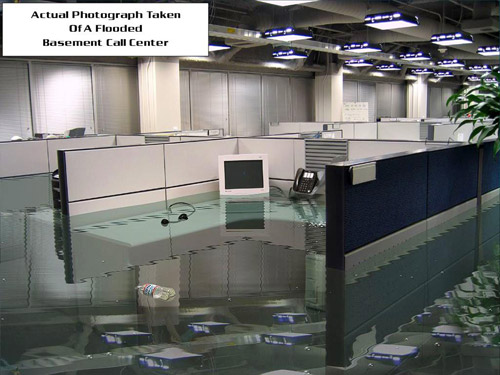Storms are both beautiful and powerful. Which means they can distract you while causing stress to your environment and computer systems. We won’t go into the types of storms, instead we will go into the types of hazards.
Quick Things to do:
- Move or cover all equipment near windows
- Shutdown non-critical equipment
- Test your battery backups
- Have a good backup
Power Failures and Surges
Data loss, equipment failure, and Operating System corruption are all caused by power failures and electrical surges. Are you protected? Do you have a battery backup (UPS) on the computer systems and servers that matter? When was the last time you tested or changed the batteries? Batteries should be changed out every 18-24 months based on your UPS tests. When in doubt, turn off the important systems to prevent issues. You can test the UPS by pressing the “test” button or simply unplugging it from the wall.
 Wind and Water
Wind and Water
Now we don’t assume you are storing your server room on a patio or basement. However, most people enjoy the comforts of looking out a window. Having windows means potential for flying objects to shatter them and causing damage from wind blowing equipment over or rain soaking everything. If you will not be in the building to respond, turn off and cover the monitor and desktops with trash bags to prevent water damage. Unplug as well – electricity and water are not friends to your equipment.
Have Good Backups
Now we are not talking a “backup” that was scheduled three(3) years ago and forgotten about. We are talking a recent (last night) backup that has all the files updated and ready to go in the event you come back to a leveled building up in flames. Off-site backups work great as well. The only issue with off-site backups is the time to restore the data. Have you read the article on NAS Drives?
What Does Tidewater Techs Do During a Storm?
Simply put, not much! Now you are probably saying, “yeah, right, then why should I listen to you”? We plan and constantly check our services, so we don’t have to react in harsh weather.
- All our system are on battery backups that are checked every 6 months for failed batteries.
- Power monitoring software (that comes with most high-end UPS) monitors the computers and shuts them down when power is low
- We shut-down in phases. Phase I turns off all unneeded servers, Phase II turns off all main servers, Phase III turns off all networking equipment.
- We have a separate USP on the network and wifi so we can stay online as long as possible.
- We BACKUP!!!
Equipment failure can occur ANY TIME you power off a computer. It can happen for no reason with no warning. The number one issue comes from mechanical hard drives (the ones that have a spinning disc). Number 2 is a USB stick left in the computer that is trying to boot!
UPS Batteries can be changed substantially less cost than replacing the UPS and in many cases you can improve run-time with more powerful batteries.
